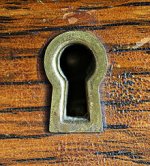What kind of expander are you using??? I like to use the lyman m-die when I load any hb bullet for several different calibers. Traditional expander dies are made for short .357" jacketed bullets. The m-die has a llloooonnngggger body to expand the case where it counts, at the base of the bullet. It also has a step in it that makes a shelf in the top of the case mouth that aids in starting the bullet straight. A picture of a lyman m-die.

Picture of a m-die next to a factory expander. If you look at the factory expander you can see where the brass has left a ring where it stops being expanded. Huge difference in the depth that it goes into the case compared to the m-die. That is what protects the base of the soft lead bullets.

If the bullets are seated crooked or being swaged down at the base too much. Bullet skidding will occur which in turn affects accuracy & stability. When I see #'s like 3% or 4% of my loads tumble, things like this come to mind. If incorrectly loaded the bullet will tumble as soon as it leaves the reloading press and long before it ever is in the revolver.
HBWC's are a long bullet and care should be taken when seating them in a properly expanded case. A picture of the 3 main wc/hbwc bullets I use/shoot in the 38spl's & 357's.
left: h&g #50 148gr button nosed wc
center: flat nosed 148gr hbwc from a custom mold
bottom: lyman 358395 148gr button nosed hbwc

Just something to think about




